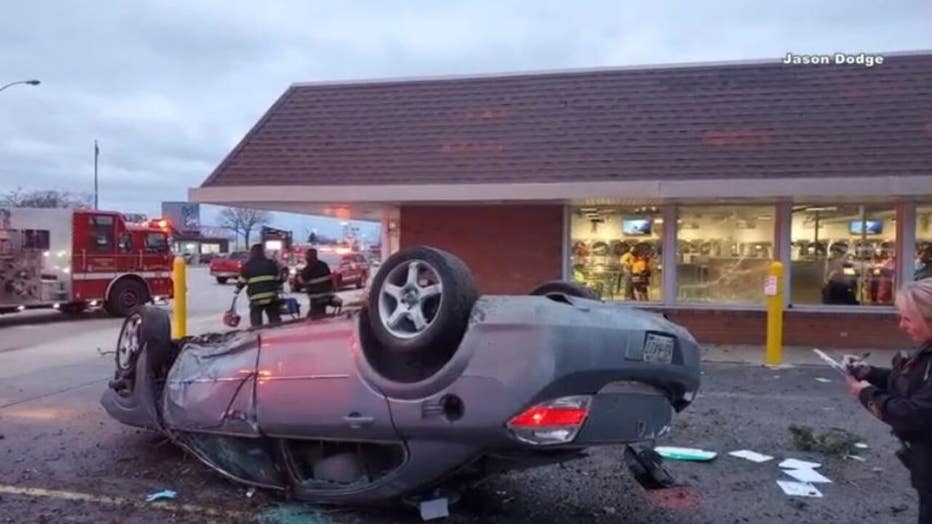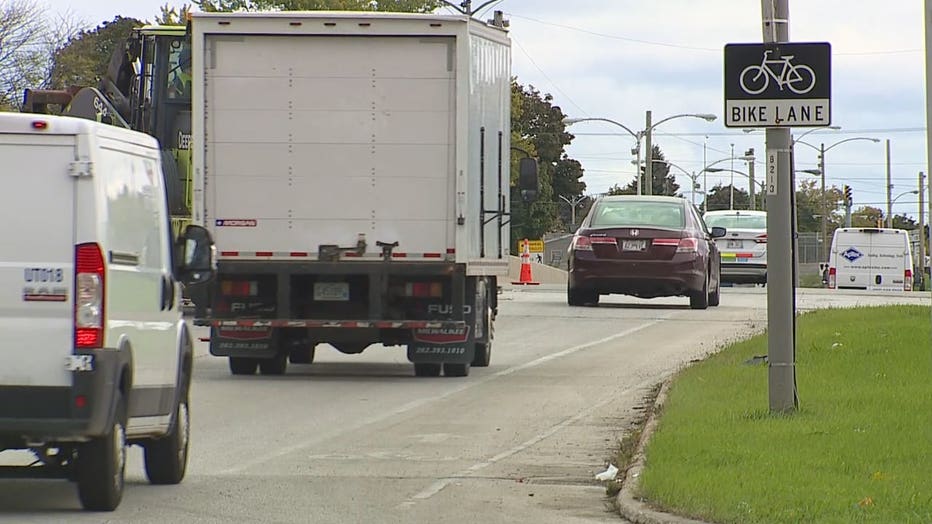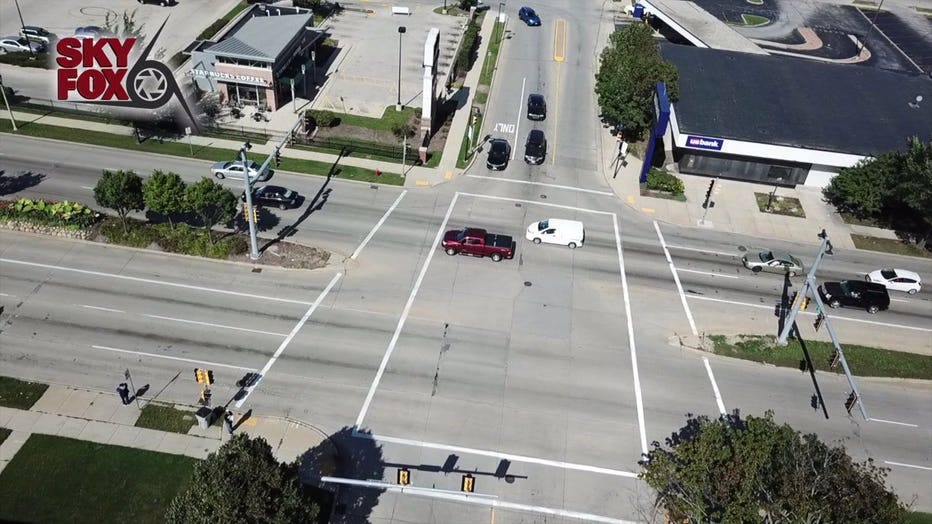Milwaukee gets $4.4M traffic safety grant
MILWAUKEE - Milwaukee is among hundreds of cities and counties across the U.S. receiving a share of over $800 million in federal grants to improve the safety of streets and intersections under funding announced Wednesday, Feb. 1 by the U.S. Department of Transportation.
The competitive grants include nearly $590 million to carry out 37 projects making physical safety improvements to roadways in 22 states. An additional nearly $213 million is being distributed in smaller increments for hundreds of traffic safety planning efforts across the country.news
The grants are the first under the Safe Streets and Roads for All program, which ultimately will provide $5 billion over five years. The program was part of the federal infrastructure law passed by Congress and signed by President Joe Biden in 2021.
Grants generally are intended to promote safety for multiple roadway users, including motorists, bicyclists and pedestrians.
SIGN UP TODAY: Get daily headlines, breaking news emails from FOX6 News

Milwaukee reckless driving crashes Capitol Quick Wash Laundromat near 79th and Capitol
Milwaukee gets $4.4 million
Milwaukee was awarded $4.4 million from the federal government to improve traffic safety.
The Milwaukee Department of Public Works said the Safe Streets and Roads for All Grant from the U.S. DOT totals $5.5 million ($4.4 million federal, $1.1 million city) and will increase the number of traffic-calming projects in the city.
Milwaukee was one of the 37 recipients awarded this competitive implementation grant.
"Safe streets are vital to our quality of life. This federal resource will lead to greater safety for pedestrians, bicyclists, scooter riders and stroller pushers throughout these neighborhoods," said Milwaukee Mayor Cavalier Johnson in the DPW's statement Wednesday.
Milwaukee's application, titled "Accessible Intersections for All," identified five major streets for improvement, the DPW said:
- Capitol Drive, from Roosevelt to 15th
- Atkinson Avenue, from Capitol to MLK
- Cesar Chavez Drive and 16th Street, from Pierce to Forest Home
- Greenfield Avenue, from Cesar Chavez to 6th
- Forest Home Avenue, from 16th to Lincoln

"All of these locations are within the city’s pedestrian high-injury network. This funding is a major step forward as we work toward safer streets for all modes of travel," Commissioner of Public Works Jerrel Kruschke said in the DPW's statement.
Milwaukee DPW project summary
The project will focus on identifying pedestrian improvements at 26 intersections along five of the city’s most dangerous and underserved streets, with a particular focus on bringing those intersections up to ADA compliance according to PROWAG guidelines. This project will prioritize improvements for people with visual and/or audible impairments, ensuring all Milwaukeeans can safely, comfortably, and predictably travel along our streets. These improvements will include:
- Upgrading traffic signal equipment to ensure reliable corridor operations, equipped with the latest safety technology
- Bringing intersections up to ADA standards to address non-compliant pedestrian facilities, including pedestrian ramp upgrades, island installations with cut-throughs, and curb extensions to slow turning vehicle speeds, shorten pedestrian crossings, and increase pedestrian visibility
- Realigning skewed intersections to shorten pedestrian crossing distances
- Closing approaches on intersections with five or more legs to reduce intersection complexity and return awareness to non-motorists
- Applying road diets where appropriate along corridors to reduce high speeds and double-threat crash scenarios
- Installing APS at all project signals to ensure our most vulnerable users can safely locate corners, aligning themselves with the crossing direction, maximize use of the "Walk" time, and safely clear intersections prior to the onset of conflicting green movements.
The project will also include the installation of high-visibility pedestrian markings and relocation of stop bars farther away from crosswalks to minimize conflicts with pedestrians. Other low-cost signal and sign improvements may be considered including leading pedestrian indications (LPIs).

Where else will the money go?
The list of 37 projects receiving multimillion-dollar implementation grants can be found here. The projects are in these states:
- California
- Florida
- Georgia
- Iowa
- Kentucky
- Massachusetts
- Maryland
- Michigan
- Montana
- North Carolina
- North Dakota
- New Jersey
- New Mexico
- New York
- Ohio
- Oklahoma
- Oregon
- Pennsylvania
- Rhode Island
- Texas
- Washington
- Wisconsin
The cities of Atlanta and Philadelphia will receive the largest grants of $30 million each.
Atlanta's grant will help fund improvements to Pryor Street and Central Avenue and connect a south-side trail to downtown. The project includes roadway reconfigurations, medians, bicycle lanes, crosswalk lighting and flashing beacons.
Philadelphia's grant will fund improvements along North Broad Street and Cecil B. Moore Avenue. The project includes raised medians and pedestrian crossings, intersection modifications and traffic signal improvements.
What about other grants?
A list of local governments receiving planning grants for roadway safety measures can be found here.
The 473 planning grants range from $6,263 for Mekoryuk, Alaska — population around 200 — to more than $6.3 million for the Los Angeles County Metropolitan Transportation Authority.
California leads the way with 43 planning grants totaling more than $25 million, followed by 34 planning grants totaling $19 million in Florida and 25 such grants totaling nearly $17 million in Texas.
Traffic safety data
Transportation Secretary Pete Buttigieg has said the U.S. faces a "national crisis of fatalities and serious injuries on our roadways."
Nearly 43,000 people are estimated to have died in vehicle traffic crashes in 2021 — an increase of nearly one-third over the past decade, according to data from National Highway Traffic Safety Administration.

Data for the entirety of 2022 is not yet available, but estimates for the first nine months indicate that fatal traffic crashes appear to have leveled off or declined slightly. Still, they are significantly higher than levels that existed before the coronavirus pandemic.
Among states, estimated traffic fatalities in the first three-quarters of 2022 rose by the largest percentage in Hawaii, Delaware, Nebraska, Washington and Alaska. Traffic fatalities were down by the greatest rate in South Dakota and Rhode Island.

